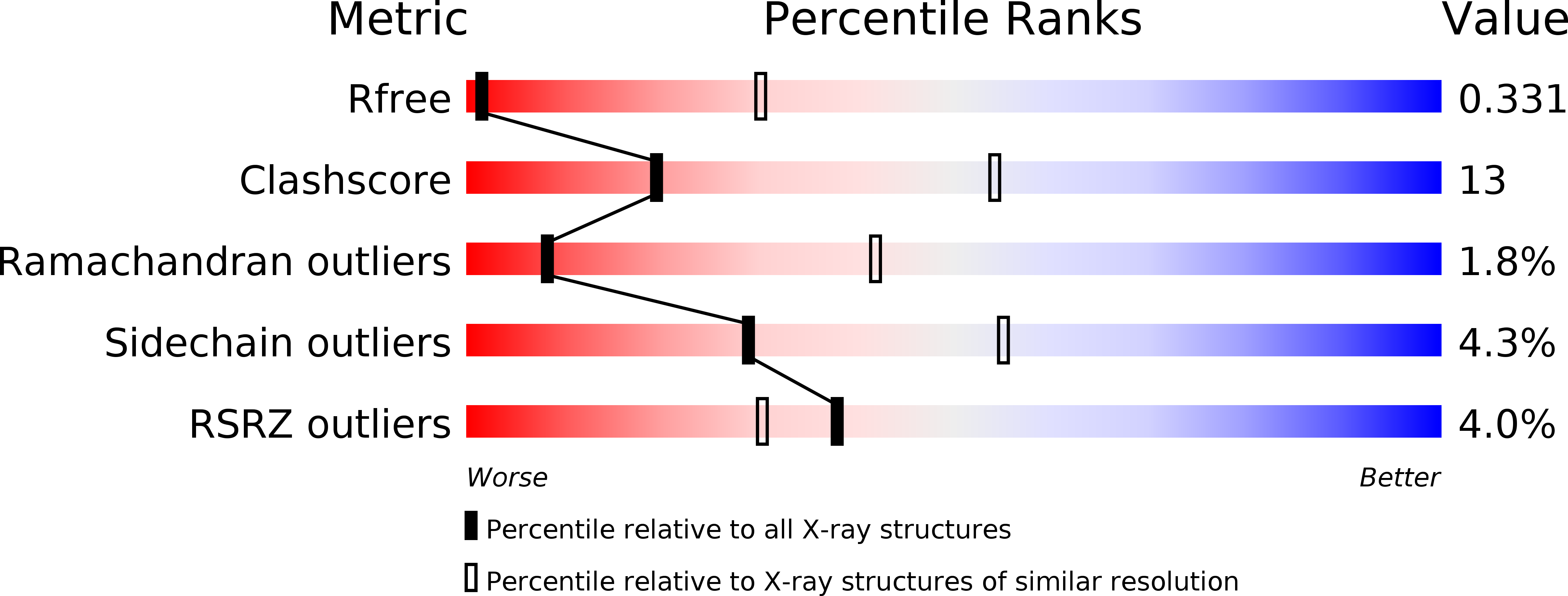
Deposition Date
2008-07-01
Release Date
2008-10-07
Last Version Date
2024-11-20
Entry Detail
PDB ID:
3DMK
Keywords:
Title:
Crystal structure of Down Syndrome Cell Adhesion Molecule (DSCAM) isoform 1.30.30, N-terminal eight Ig domains
Biological Source:
Source Organism:
Drosophila melanogaster (Taxon ID: 7227)
Host Organism:
Method Details:
Experimental Method:
Resolution:
4.19 Å
R-Value Free:
0.32
R-Value Work:
0.28
R-Value Observed:
0.28
Space Group:
I 2 2 2


